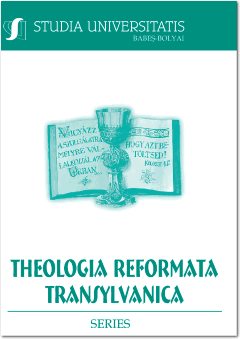„GYERMEK SZÜLETÉK BETLEMBEN.” EGY KÖZÉPKORI KANCIÓ AZ OLTSZAKADÁTI EVANGÉLIKUSOK HAGYOMÁNYÁBAN
A CHILD IS BORN IN BETHLEHEM. A MEDIEVAL CANTIO IN THE TRADITION OF THE LUTHERANS IN OLTSZAKADÁT (SĂCĂDATE)
Author(s): Timea BenkőSubject(s): Christian Theology and Religion, Music, History of Church(es), Theology and Religion, Pastoral Theology, History of Religion
Published by: Studia Universitatis Babes-Bolyai
Keywords: cantio; Gradual; popular variant; Puer natus singing; tower-song; polyphonic choir; liturgy;
Summary/Abstract: Several Hungarian-speaking Transylvanian Lutheran congregations of the 20th century have sung Gregorian passions together with a number of liturgical songs belonging to the Holy Week (such as Kyrie puerorum, Lamentatio Mariae). The Lutheran congregation in Oltszakadát is the only Lutheran congregation in Transylvania, that owns an exemplar of the so-called Öreg Graduál, the Protestant book of devotion that includes these items. The handwritten notes in the Gradual from Oltszakadát, as well as the corrections done by hand in the case of worn-out pages that contained often-sung liturgical hymns, all emphasize the fact of the Gradual’s actual regular use. The congregation in Oltszakadát kept till this day the specific singing practice of Puer natus set in the old hymnals and graduals. The local Hungarian version of the medieval cantio starting with the words Puer natus in Betlehem in hoc novo anno, is sung by the congregation on Christmas Eve’s service, and is repeated in the tower-song subsequent to the church service. The local Hungarian version, starting with Gyermek születék Betlemben ez új esztendőben is actually a variant of the cantio with the same name present in the Gradual from Eperjes (Eperjesi Graduál). The practice of Puer natus singing is still alive in Transylvanian Saxon-Lutheran congregations, and some congregations have recently readopted it. Whether it be due to the Saxon influence or the close relationship to the Gradual from Eperjes, the congregants from Oltszakadát sing the song in simple polyphony.
Journal: Studia Universitatis Babeș - Bolyai Theologia Reformata Transylvanica
- Issue Year: 64/2019
- Issue No: 2
- Page Range: 177-188
- Page Count: 12
- Language: Hungarian

